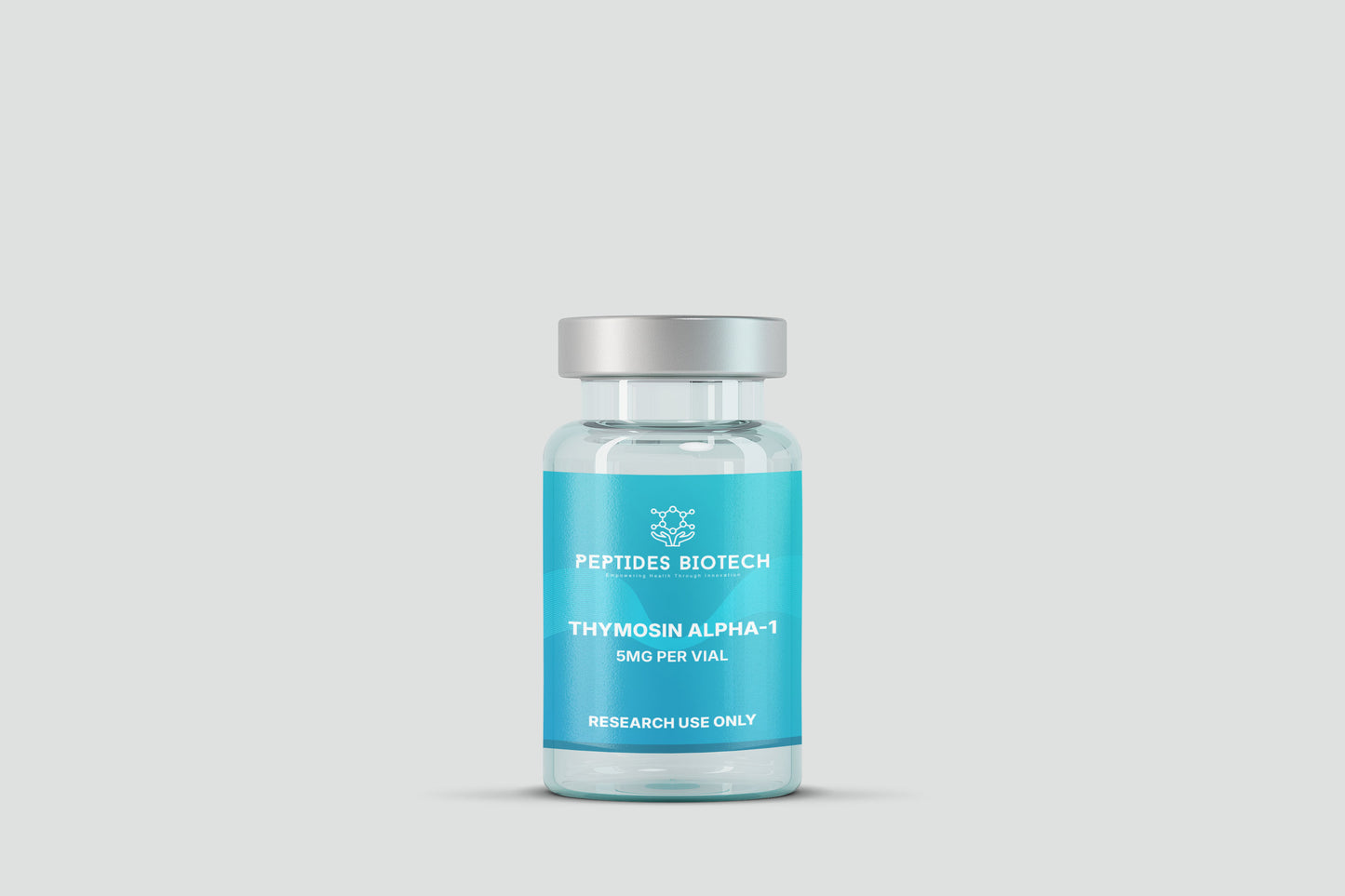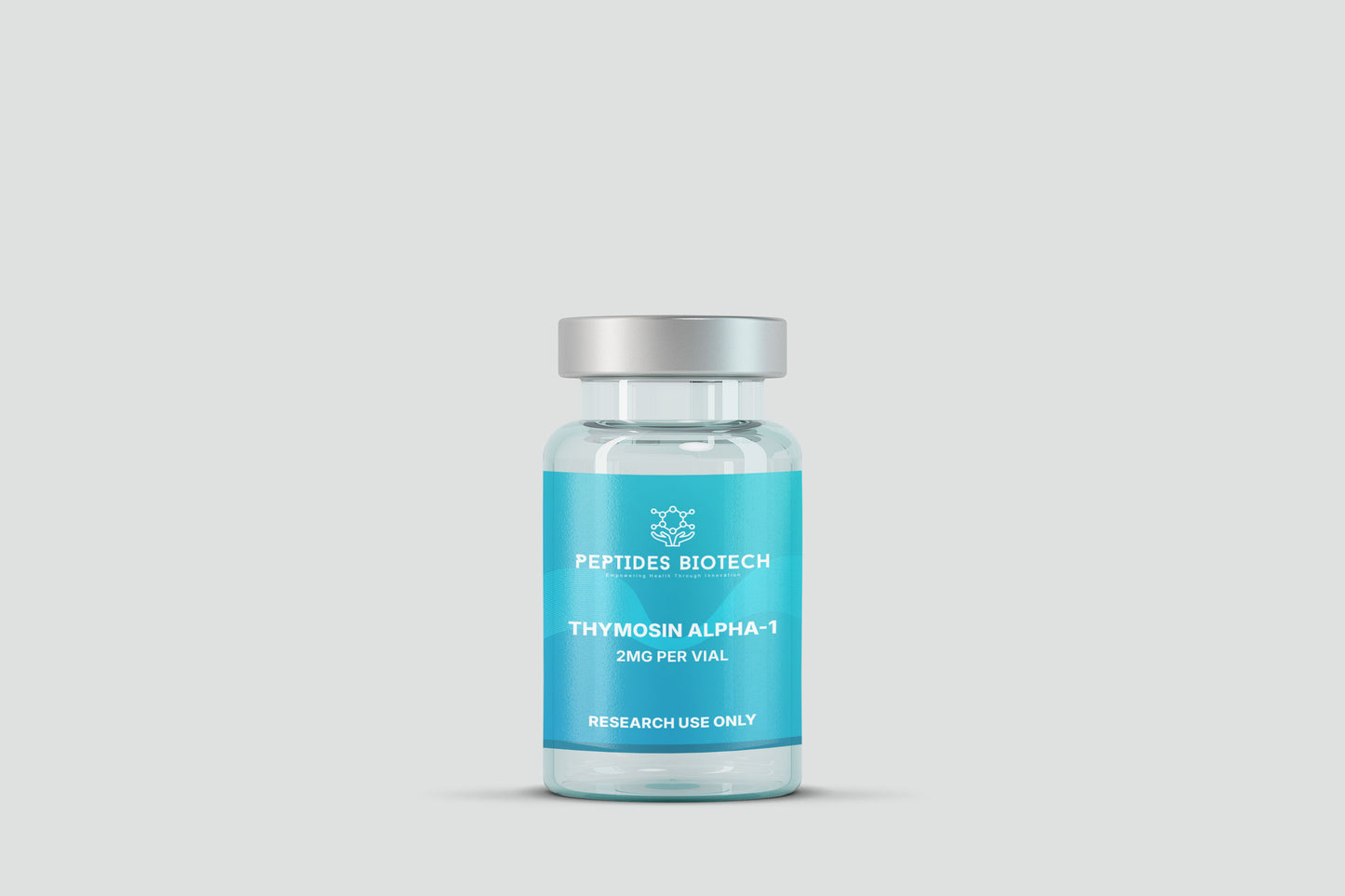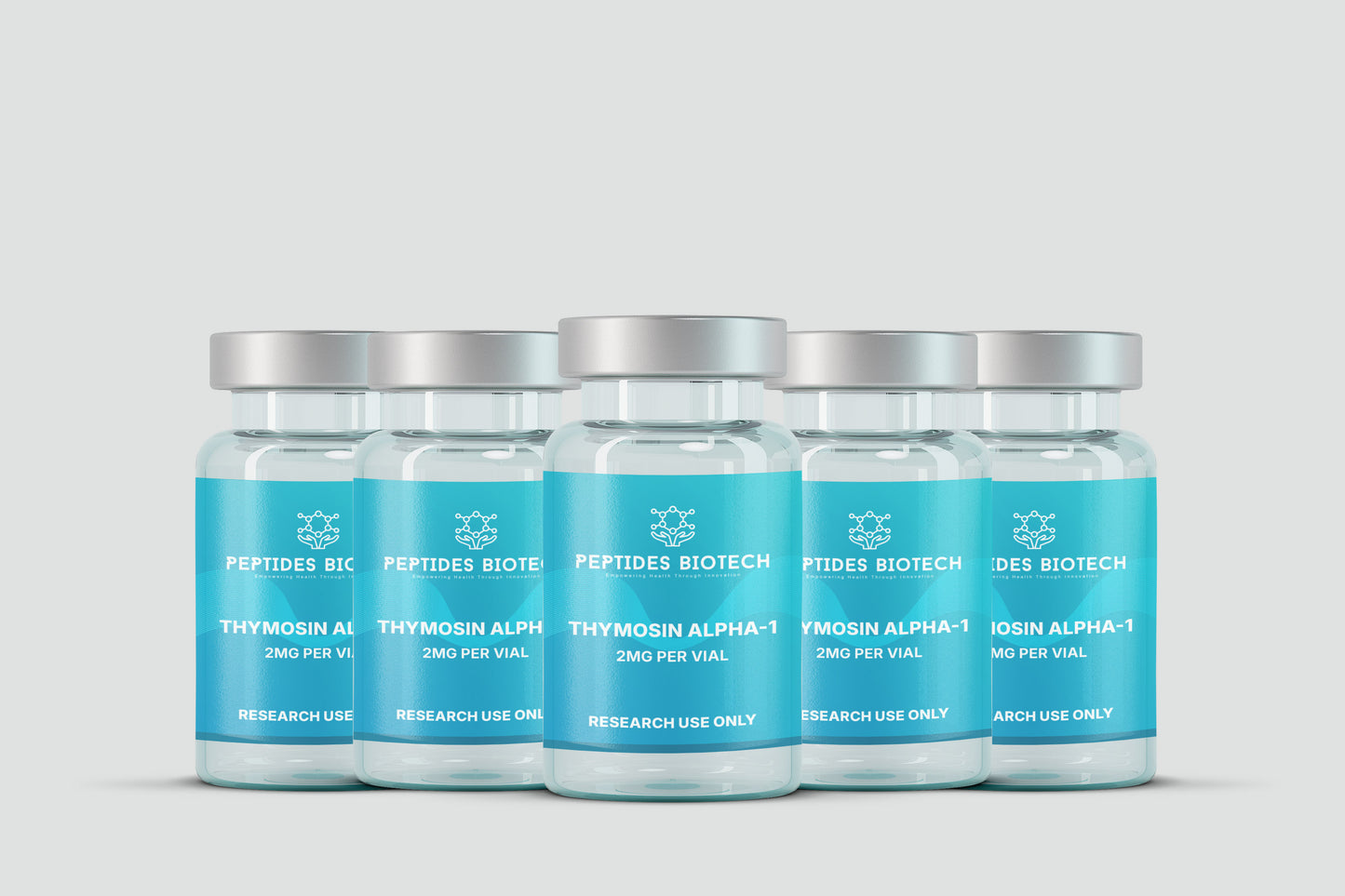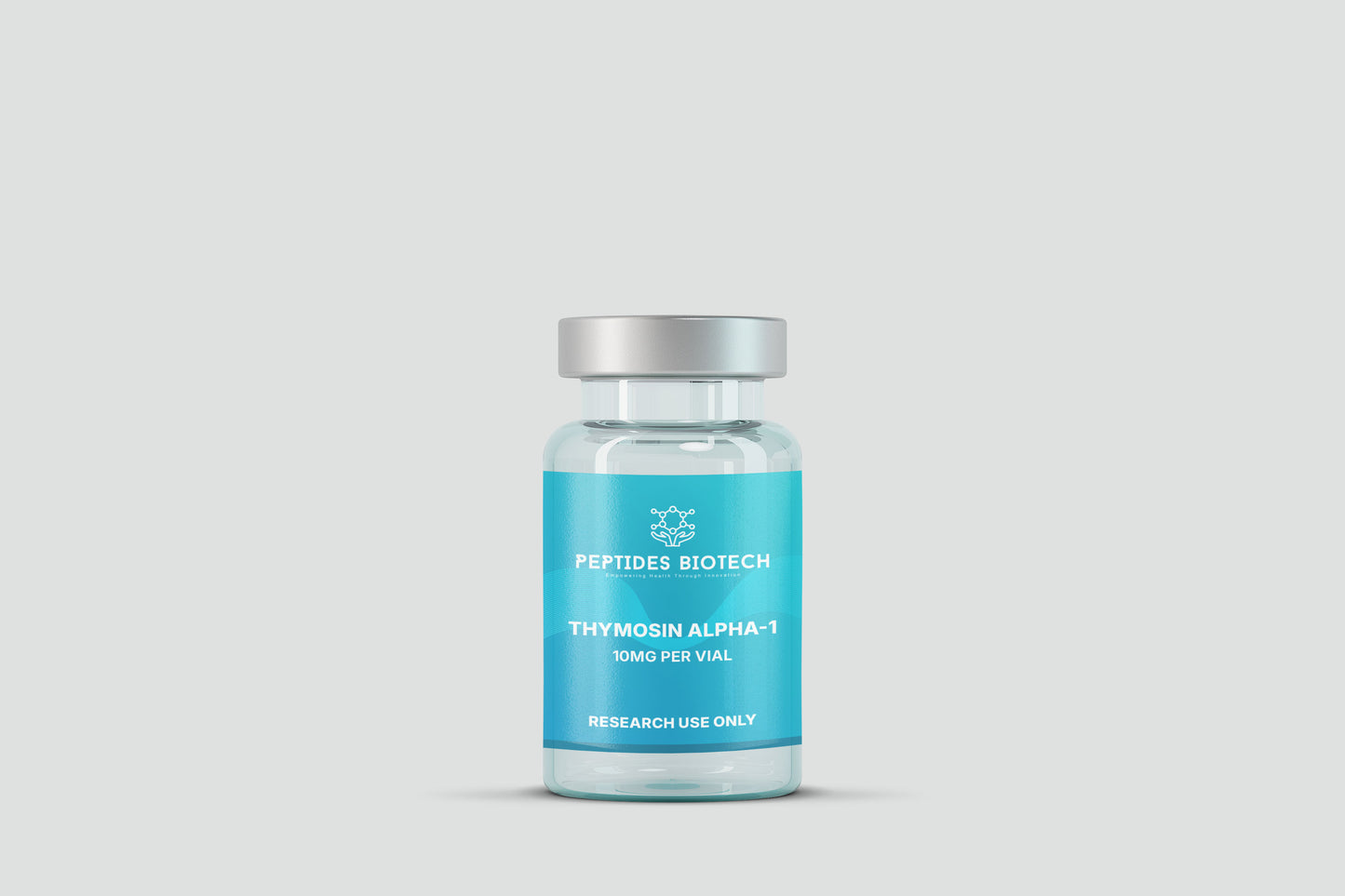Thymosin Alpha 1 (TA1)
Thymosin Alpha 1 (TA1)
What is Thymosin Alpha 1 (TA1)?
Thymosin Alpha 1 (TA1) is a naturally occurring peptide initially identified in the thymus gland. Discovered in 1972, this peptide fragment has become a key focus of research due to its immune-modulating properties. TA1 plays a significant role in supporting immune system regulation, making it a valuable tool in studies investigating immune function and resilience. Its natural origins and ability to influence immune pathways have spurred interest across various fields of scientific exploration.
Research into TA1 has primarily focused on its role in immune system balance, with investigations spanning chronic infections, inflammatory conditions, and immune dysregulation. Studies suggest that TA1 may help regulate immune responses in laboratory settings, offering potential insights into the mechanisms of immunity and inflammation. Its capacity to modulate immune pathways makes it a promising candidate for further exploration in experimental models.
The study of TA1 also extends into broader contexts, such as its role in cellular processes and tissue repair. Early findings highlight its potential applications in areas requiring enhanced recovery and resilience. As research into Thymosin Alpha 1 continues, it remains a cornerstone in the exploration of peptides and their diverse effects on biological systems.
What Are the Effects of Thymosin Alpha 1 (TA1)?
Immune System Regulation and Anti-Inflammatory Properties
Thymosin Alpha-1 (TA1) is widely studied for its role in immune system modulation and regulation. It is associated with activating and balancing immune responses, which may contribute to better handling of environmental stressors and challenges. Additionally, TA1 exhibits anti-inflammatory properties, potentially aiding in the reduction of excessive inflammatory signals. This dual functionality highlights its relevance in studies focused on immune health and inflammatory pathways.
Tissue Repair and Regeneration
TA1 has been observed to support tissue repair and cellular regeneration in various research contexts. It may enhance processes associated with healing and recovery, including promoting cell growth and reducing inflammation at the site of tissue damage. These characteristics are of interest in studies involving tissue recovery, wound healing, and regenerative applications.
Potential Applications in Disease Models
TA1 has shown promise in research exploring its role in disease models, particularly those involving immune dysregulation or chronic inflammatory states. Studies suggest it could play a role in maintaining immune balance and supporting resilience against environmental and biological challenges. Furthermore, its interactions with cellular processes make it a subject of interest in experimental applications related to oncology, chronic conditions, and infectious diseases.
Chemical Structure of Thymosin Alpha 1 (TA1)
Thymosin Alpha-1 (TA1) is a peptide composed of 28 amino acids. The precise amino acid sequence of TA1 is:
Ac-Ser-Asp-Ala-Ala-Val-Asp-Thr-Ser-Ser-Glu-Ile-Thr-Thr-Lys-Thr-Leu-Thr-Leu-Ser-Asp-Tyr-Leu-Val-Leu-Leu-Leu-Thr-Arg
This sequence highlights the peptide's intricate structure, with each amino acid playing a specific role in its overall stability and function. The acetylation at the N-terminus (Ac-) is critical for maintaining the peptide's structural integrity and bioavailability during studies.
Thymosin Alpha-1's structure supports its role in various experimental applications, particularly those exploring immune modulation and cellular signaling. The sequence's specific arrangement enables its interactions with other molecules, making it an essential focus of research in immune response regulation, inflammation studies, and disease models.
By understanding the structural characteristics of TA1, researchers can further investigate its potential applications in experimental frameworks, from immune system studies to regenerative models. The detailed sequence provides a foundation for its evaluation in laboratory settings.
Couldn't load pickup availability
In stock
DisclaimerThis product is not for human or veterinary use and should only be utilized by qualified researchers in a laboratory setting.
Keep this product out of the reach of children. This material has limited research available about it and may result in adverse effects if improperly handled or consumed. This product is not a dietary supplement, but a pure substance, sold as a raw material. We attest exclusively to the quality, purity and description of the materials we provide. This product is for use and handling only by persons with the knowledge and equipment to safely handle this material. You agree to indemnify us for any adverse effects that may arise from improper handling and/or consumption of this product.
All our products are for LABORATORY AND RESEARCH PURPOSES ONLY, not for veterinary or human usage. View full details








